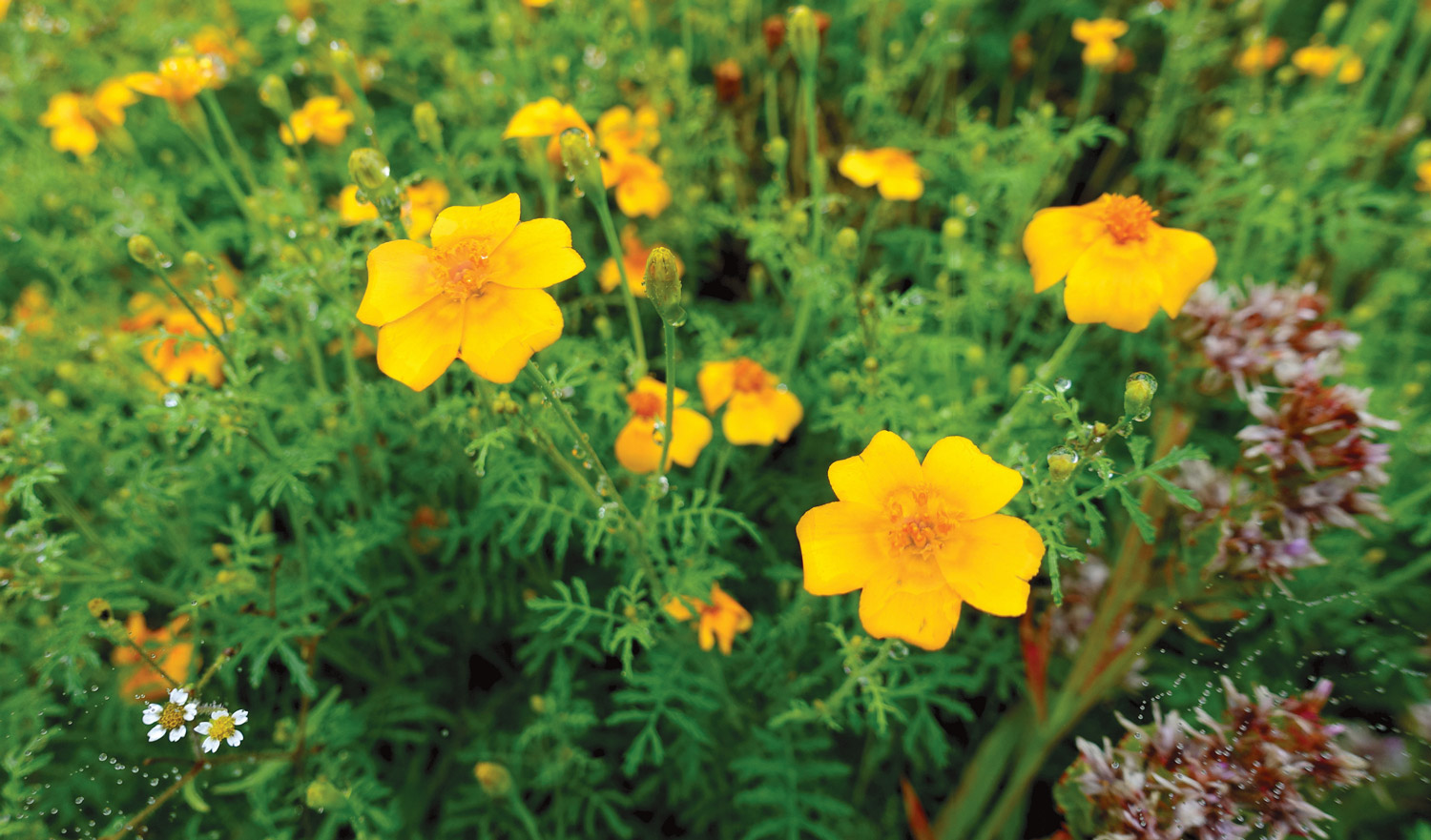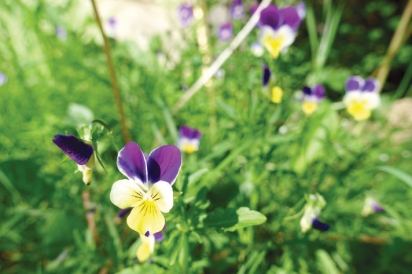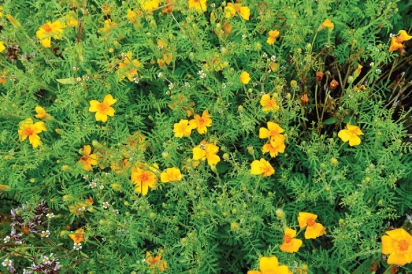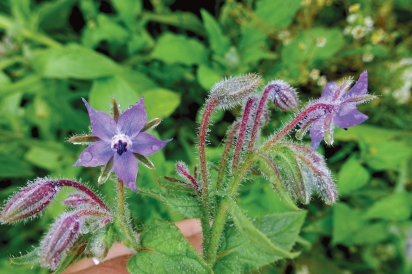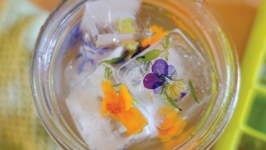Greetings From Your Garden: Class up Your Recipes with Pretty, Tiny, Edible Flowers
Here we are again, in the middle of the coldest time of year, ready to think about the milder weather to come and all the exciting planting options we will have once spring arrives. One of the best parts of having a backyard garden — or front-yard garden or side-yard garden or even a small container garden — is that there are near-infinite ways to plan out your growing space, and that plan can be adjusted each year according to your specific aesthetic and culinary hopes.
This winter, as you browse through those seed catalogs I love so much, I humbly suggest you consider planting more tiny edible flowers.
As I’ve written about numerous times, my own gardening goals most often revolve around growing hardy plants that I won’t have to fight with, and that can be used in multiple ways in my kitchen. While I recognize the value of plants that are nice to look at but not edible, I will always lean toward a dual-purpose plant that is both beautiful and tasty, especially since there are so many species that fit this bill. Another key factor that I consider when making a gardening plan is that I want to grow useful ingredients that can’t easily be purchased at my local stores and farm stands.
It is this last consideration that motivates me to grow a variety of edible flowers. They are one of my favorite things to use in my kitchen, but their hyper-perishable nature — they often begin to wilt and look sad nearly immediately after harvest — makes them one of the least likely items to be available for purchase anywhere.
They also make my garden very, very pretty. And what’s not to like about that?
There are so many different options to choose from in the world of edible flowers, offering blooms of all different shapes, sizes, colors, and flavors. If you are hoping to fritter your flowers, consider growing some elderberry or milkweed. If you’re in the market for a fragrant syrup, perhaps lavender or lilac might suit your fancy. And if you’re hoping to fancy up nearly any dish with barely any effort at all, then there is an entire world of small edible blossoms to choose from, including three of my favorites, Johnny-jump-ups, gem marigolds, and borage, each of which brings something special, and distinctly different, to the table.
HELLO, MY NAME IS JOHNNY-JUMP-UP:
Johnny-jump-up (Viola tricolor) is a hardy and resilient annual plant that will sometimes return as a perennial depending on how cold the temperatures dip in the winter. It has the same trademark, five-petaled and bilaterally symmetrical flower shape — which in their case means they are symmetrical vertically but not horizontally — as other flowers in the Viola species, a group that also includes pansies and wild wood violets. Most flowers in the Viola grouping are edible, but Johnny-jump-ups are the variety I grow and use the most frequently since they come in so many different color combinations, bloom consistently throughout the growing season, are mild tasting, and are small enough to make them particularly versatile in a wide variety of recipes.
As with so many other edible and medicinal flowers that grow in my garden, I will often pick and dry Johnny-jump-up blossoms and leaves for use in tea blends throughout the year. While the leaves of this plant are also edible, I prefer them as an addition to tea rather than throwing them in salads. Plants under the Viola umbrella have long been used medicinally to help with congestion and skin issues in combination with other medicinal herbs like thyme and clover. Johnny-jump-ups can also be used as decoration for any baked good you can think of, either candied in sugar or fresh, and since their flavor is so mild, they will pair well with nearly any other flavor profile — a quality that isn’t true of the other two flowers profiled in this article. One of the prettiest cakes I ever made for a friend’s birthday was a simple vanilla layer cake with white frosting lightly decorated with these purple, yellow, and white flowers. Feel free to also throw a handful of these little guys on the top of a salad, but they are so delicate that you should wait until right before serving to avoid having them lose much of their pop.
HELLO, MY NAME IS GEM MARIGOLD:
The gem marigold (Tagetes tenuifolia) plant produces a gorgeous little sunburst of a flower that has five petals and, unlike Viola varieties, is symmetrical both horizontally and vertically. Also called signet marigold, gem marigolds are a low-growing annual member of the Asteraceae family that also includes calendula, dandelion, and the larger many-petaled French marigolds that are common in flower gardens, all three of which are also edible. They generally come in vibrant warm tones that range from solid yellow to a sunsetty orange ombre to a darker, bold garnet. The plant will produce many, many of these eye-catching flowers for a large portion of the growing season. Unlike some of their milder-tasting related counterparts, the flower and leaf of this delicate-looking plant packs a punch. Though it is described in many resources as lemony, I find the flavor, and even more so the fragrance, of gem marigold to be quite grapefruit-like in nature. It pairs well with things that can take a bit of citrus and a bit of bitter (both of which I happen to love). To include less of that bitter touch in your dishes, pull the flower heads off the green bases and don’t include any of the leaves, just as you would with a dandelion flower.
I like to use gem marigolds in green salads, especially ones that include pieces of orange or grapefruit or a sharper cheese like feta. I mixed some into my batch of homemade dandelion wine this past year to add a bit more depth of flavor and a punch of brighter color. They are also a great addition to a stronger tasting tea — think Earl Grey-esque flavors, which can include bee balm/ wild bergamot — and would be lovely in a tart drink, especially one with a bit of fizz.
HELLO, MY NAME IS BORAGE:
Way on the other end of the flavor profile sits our friend borage (Borago officinalis). Also known as starflower, due to the perfect little five-pointed star shape of its bright periwinkle flowers, this annual plant is in the Boraginaceae family. It can reach several feet in height, and bears leaves and stems that are covered in soft white hairs. The flower, which is the most useful part of the plant, grows facing downward in clusters at the tops of the stems. And it tastes startlingly like cucumber. Or a bit like, well… fish, depending on who you ask. While you will just have to taste these flowers for yourself to see which camp you fall in, I firmly believe that these adorable and bright little blossoms taste like a cucumber slice, and I use them accordingly in recipes that either include or would benefit from some of that common and refreshing vegetable.
Mix borage flowers into a fluffy cream cheese or ricotta spread or toss a few on top for serving. Add it to a summer salad with watermelon, mint, and (once again) some tangy feta or a bright chèvre. Toss in a few flowers before serving a cucumber or zucchini salad dressed with lemon juice and a bit of honey. Or use several to garnish a cucumber-jalapeño gin drink.
Which brings me to one of my favorite ways to use all three of these flavorful little blossoms — frozen into fancy ice cubes that will wow all your friends whenever you drop a few into a sparkling refreshment. The credit for reminding me of this lovely method of using small edible flowers goes to Kristie Kapp of Cape Cod’s own Resilient Roots, who used borage flowers in just this way during a gathering I attended at her house several years ago. I’d whipped up several different kinds of garden syrups for mixed drinks, and she garnished the glasses with these gorgeous ice cubes, each with a bright blossom frozen inside each one. The effect of the whole thing was wonderfully eye-catching and fancy and was executed with just the smallest bit of extra effort. The next time you’re having an outdoor gathering during the growing season, keep this fun and quick little addition to your party planning in mind.


